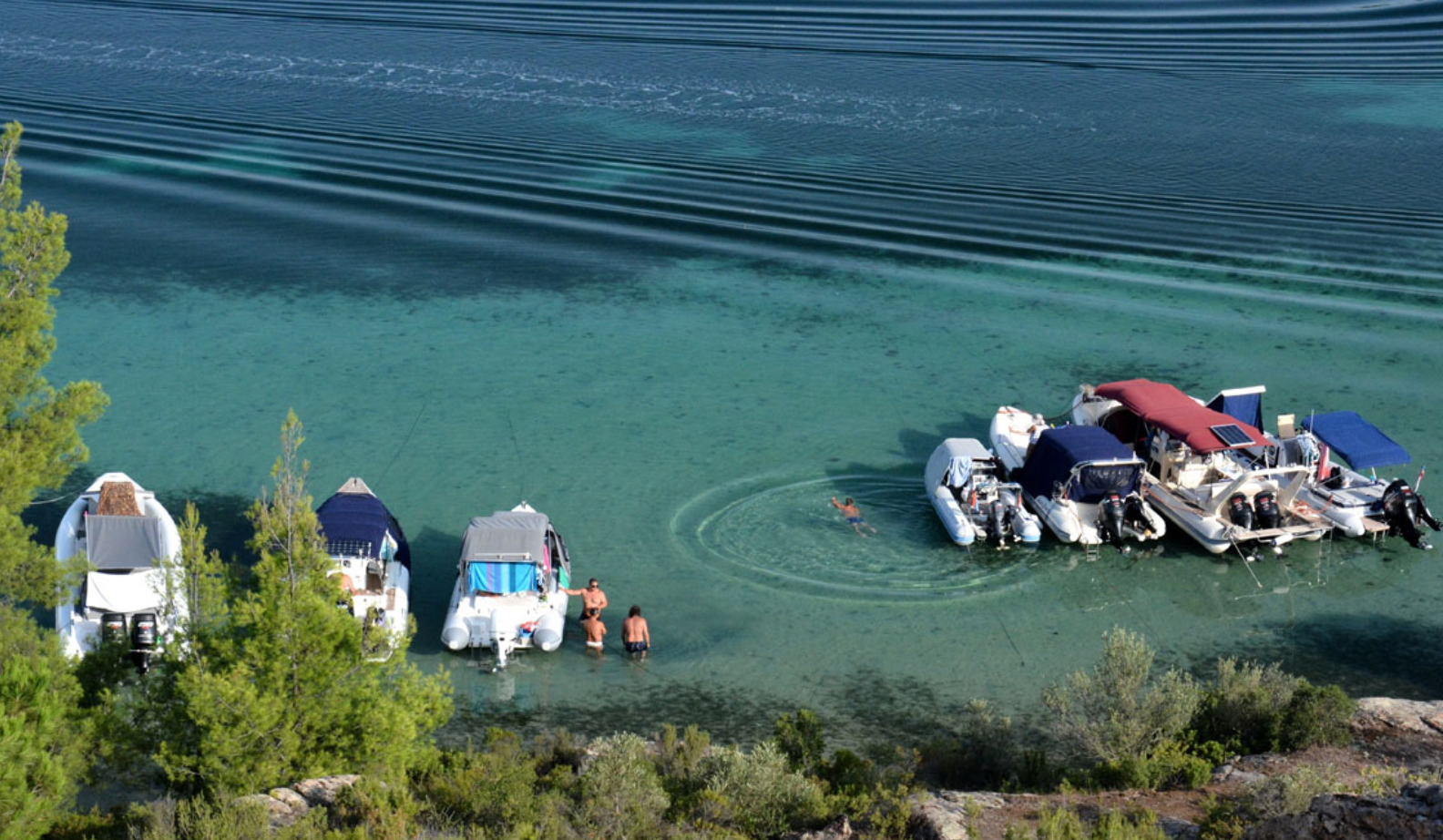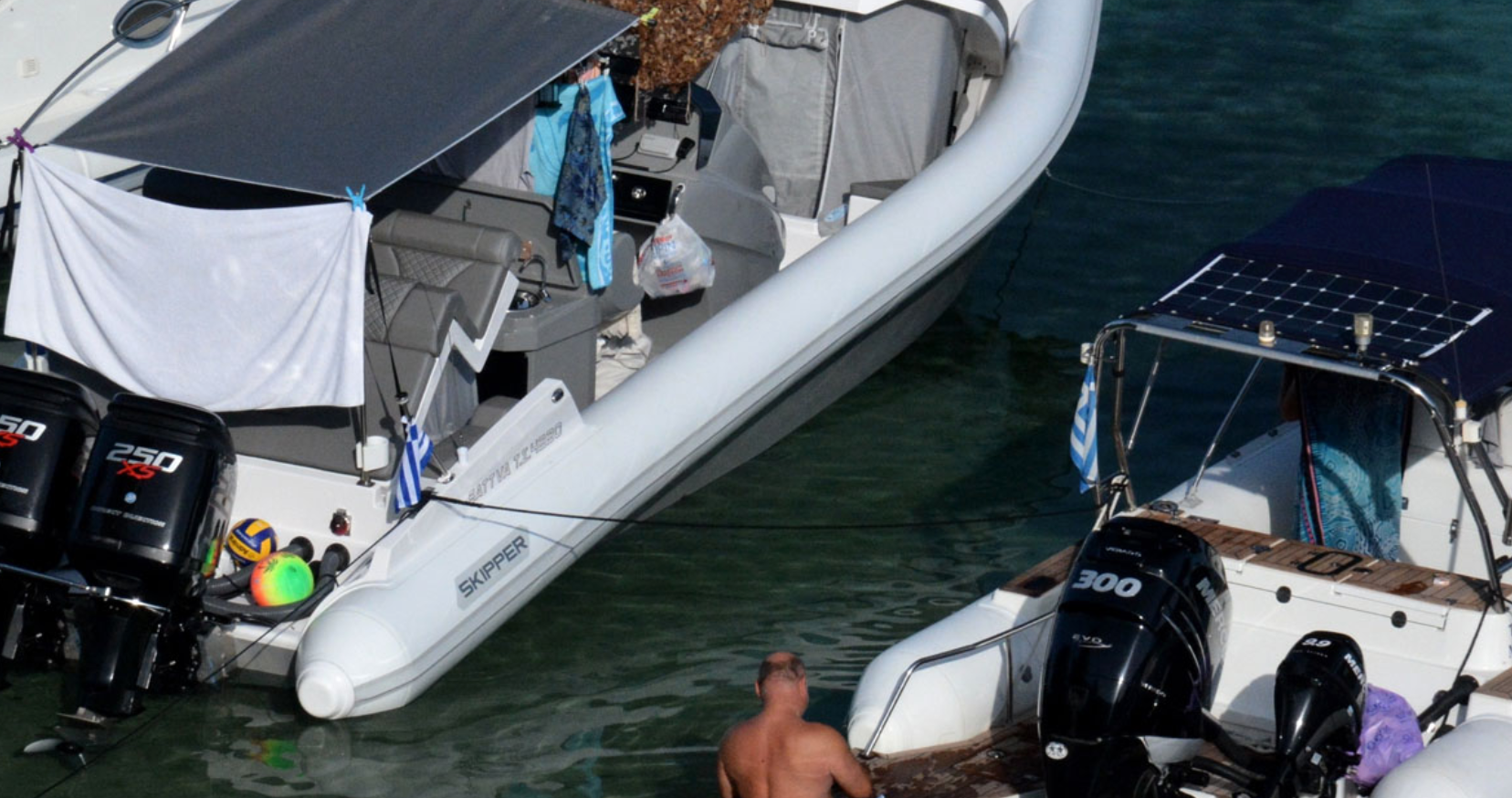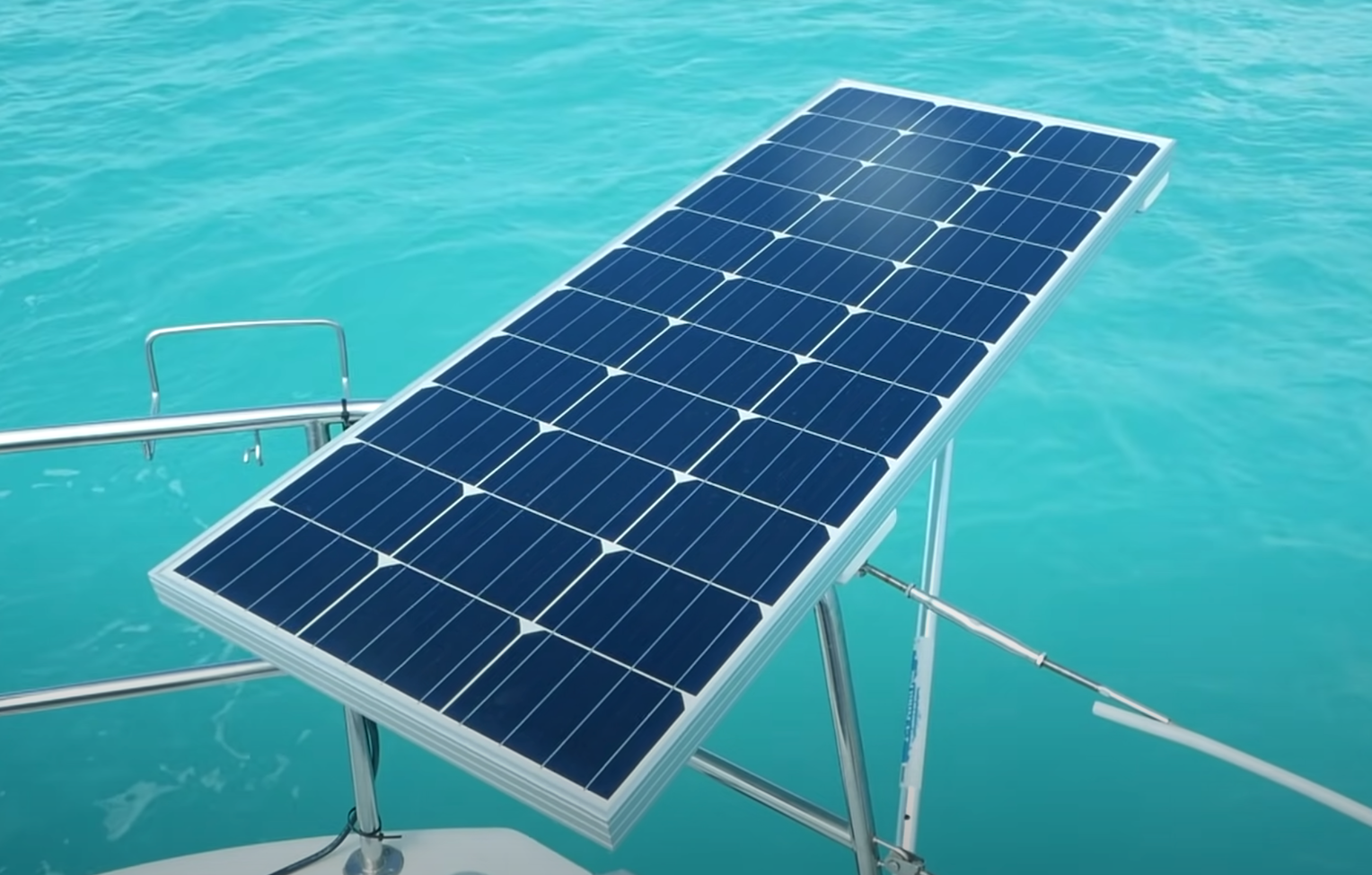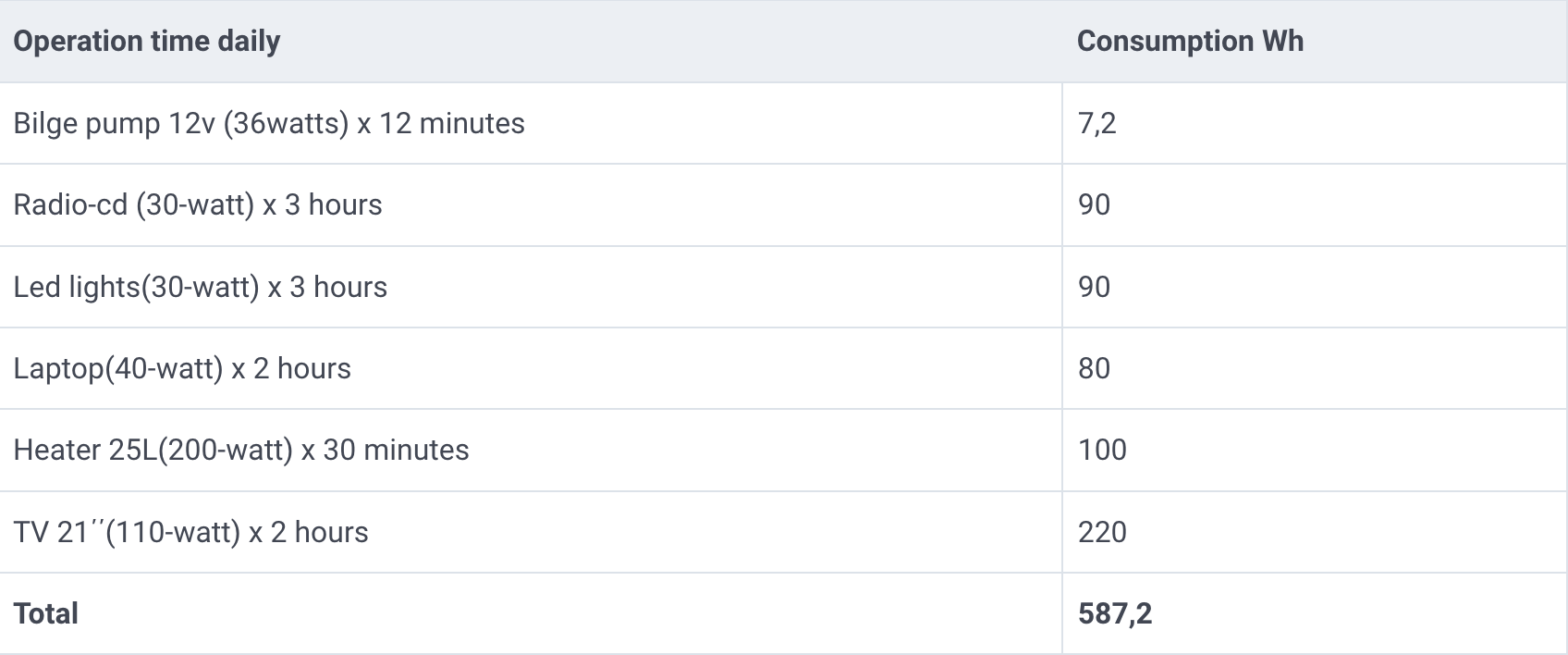Solar Panels on Smaller Boats

Rigid hull inflatable boats (RIBs) have grown to as long as 50’ (15.24 m). Not surprisingly, their standard-equipment lists have grown accordingly. Many have refrigerators, freezers, heaters, microwaves, and more and now require more electricity than the onboard batteries can usually provide. This is where solar panels can play a role.
Especially when are used to anchoring in solitary coves for a weekend or more, batteries need to be recharged to meet our increased demands. This is where solar panels can come into play because they can even charge our batteries daily when the boat is on the trailer.
How Solar Works
A solar panel is basically a solar power generator. It absorbs the energy of the photons of the solar radiation, causing the electrons to move in one direction within the panel and generate DC current. This current transfers to the battery via the charging regulator that automatically interrupts the current flow once the battery is fully charged.

From the batteries, the electricity can be moved directly to the 12V devices (GPS, VHF, lights, pumps...) or to an inverter that converts the 12V DC derived from the batteries to 230V AC for use in television, air condition, microwave oven etc.
Advantages of Using Solar Panels
- We are self-sufficient with electricity almost anywhere.
- Batteries are charged and reliable at all times.
- We avoid using other sources of energy like a generator that disrupt our own peace and our neighbors’.
- We can charge our mobile devices, keep our drinks cool, cook or enjoy the music and light the boat at night without having to run our engine every few hours or use a generator.
- We use clean energy without producing any pollutants and respect the environment.
- The electricity costs nothing.
- Maintenance is minimal.
Types of Solar Panels
Monocrystalline - Polycrystalline:
The monocrystalline panel consists of high-purity silicon crystal and uniform chemical bonds. This gives it a uniform dark color while the polycrystalline is made up of several silicon crystal structures that give it a blue appearance that differs from one cell to another.

Their differences are relatively small, with monocrystalline panels outperforming the polycrystalline:
- They have slightly higher yields of about 0.5%.
- They can produce more power at high temperatures.
- They perform better in less sunshine.
- They last longer.
Flexible, Semi-Rigid and Fixed
The differences between the mono and poly panels are thickness and weight. The fixed ones are mounted on steady structures weighing from about 19 lbs. (8.5 kg) and they are about 1.4” (3.5 cm) thick. They are more durable due to their construction. The flexible and semi-rigid panels of the same power as the fixed ones weigh about 4.4 lbs. (2 kg.) or more while their thickness is almost .08” (0.2 cm). They do not require fixed structures for mounting and they can be adapted to convex surfaces, allowing them to be stitched on the awning of the boat.
How to Get Maximum Performance
Suppose we have a 100-watt solar panel. Many wonder if its performance is in line with its rated power. A panel can give almost all its rated power only under ideal sunlight conditions and only when the sun is closest distance to the panel. This happens for 3 or 4 hours each day. During the rest of the day the panel’s performance is reduced.
The electricity generated by a solar panel is proportional to the amount of light reaching its surface.

Even though the sun is above the horizon for 14 hours during the summer, we can calculate that a 100-watt panel can produce up to 500 watt-hours per day. As we understand, this number corresponds only to the days with absolute sunshine.
But what if the sky is cloudy? In this case the daily efficiency of the panel decreases more and can reach only 300 Wh.
To get the most of the energy out of our solar panel we must:
- Always keep it as perpendicular as possible to the sun's rays
- Keep it as cool as possible, because the hotter the panel, the lower its output.
- Make sure that shadows (from antennas, radars, etc.) do not fall on its surface. Even a small shadow can dramatically reduce its performance.
- If it is not possible to adjust the panel’s inclination, look to the south.
Select the Right Panel for Your Needs
To choose the right panel, we need to know the power consumption of the electrical appliances we usually use during a day.
Each device has a label indicating its electrical consumption. For example, a 60-gph (240 lph) bilge pump consumes 36 watts per hour of operation and a stereo about 30 watts per hour. Some devices do not list the watts but the Volts and the Ampere. For example, a 21” (53.34 cm) TV shows 230 volts and 0.5 amperes. Knowing that watts = VxA, we can calculate how much Watts the TV consumes per hour: 230 x 0.5 = 115 watt).
By summing the total energy consumption of all the appliances we use in one day, we can calculate the size of the solar panel we need.
In the table below we can see a typical consumption example when we are anchored in an isolated bay:

So we see that the total consumption of one day reaches 587.2 watt-hours so we need a solar panel that produces this amount daily.
Knowing that a 100 watt solar panel can give us up to 500 Wh in a sunshine day, it is easy to see that in the above example it is enough to install a single 100-watt panel to be self-sufficient. If the boat is equipped with more electrical appliances like a refrigerator or coffee maker then it becomes clear that we need a larger power panel or a second 100-watt unit.